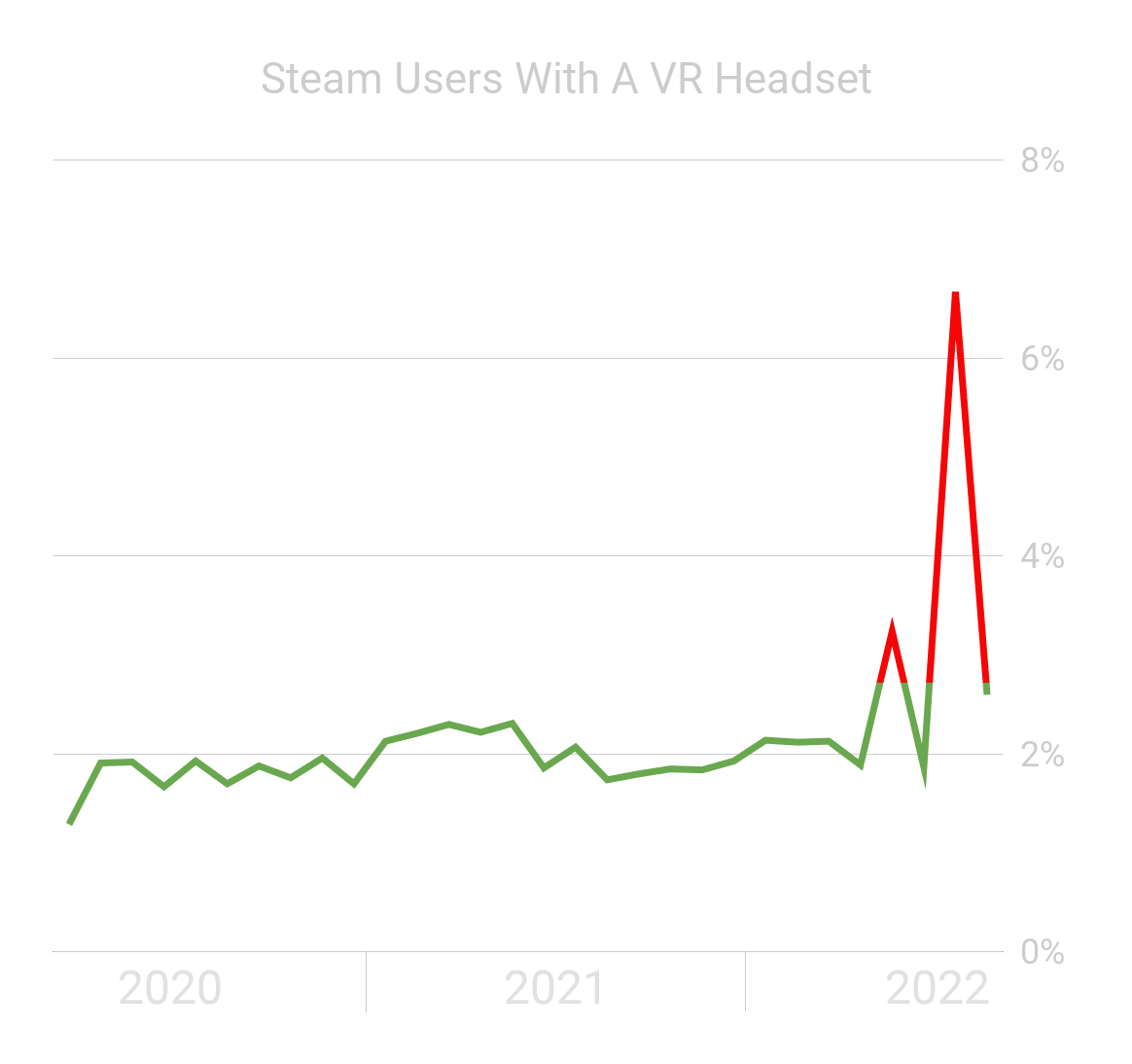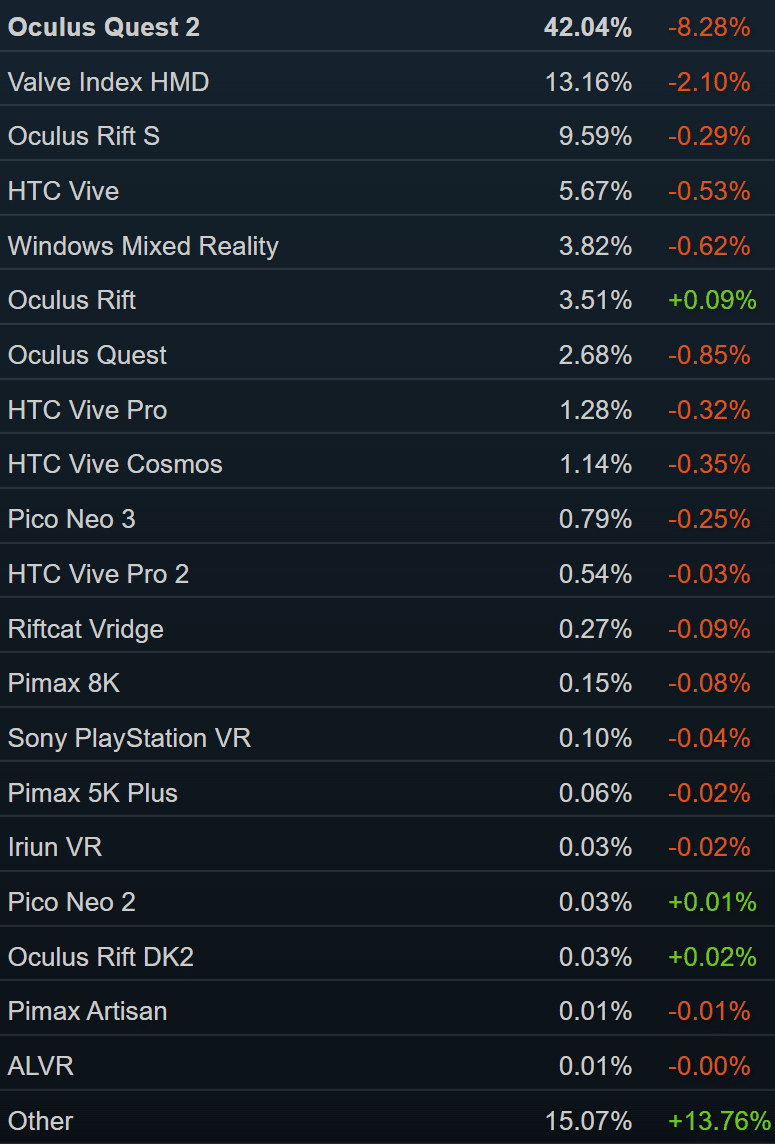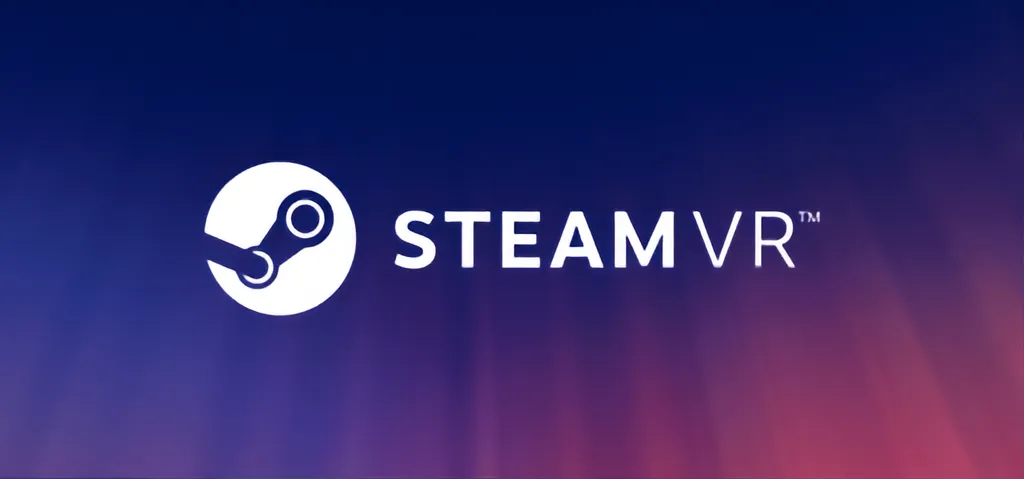Recent anomalies in the Steam Hardware Survey’s VR section suggest it has become unreliable.
UPDATE September 7: Valve has corrected the anomalous increase of ‘Other’ headset share in August’s data. The original article is available below.
Companies like Meta, Valve, & HTC don’t reveal hardware sales figures. Historically the Steam Hardware Survey was the most reliable indicator of PC VR’s adoption. The survey is offered to a random sample of Steam’s userbase each month. If you choose to accept, it uploads your PC specifications and peripherals. Before March 2020 the survey relied on headsets being connected via USB at the time of sampling, but Valve changed it to scan your SteamVR logs from the past month.

But the data for two months this year contained clearly anomalous figures for ‘Steam users with VR Headsets’. Since the introduction of the SteamVR log scanning method this figure stayed roughly stable around 2%. But May 2022’s data showed a large unexplained jump to 3.24%. June’s data returned to the normal range, but July’s shot back up to 6.67%.
The data just in for August has a sensible value for this figure – 2.60% – but this time it’s the headset share data that’s suspect.

As well as showing how many Steam users have a headset, the survey also shows the per-headset share. The ‘Other’ section – unidentified headsets or those with less than 0.01% share – usually hovers between 1% and 2%. But in August’s data Other jumped a whopping 13.76%.
This increase seems to be made up from losses in almost every headset listed in the survey, including an 8% drop in Quest 2 users, the platform’s most popular headset. According to the survey data, the only headsets which experienced growth in September were the original Oculus Rift, Pico Neo 2 and the Oculus DK2 from 2014. Suffice to say, this almost certainly wasn’t the case – there’s likely something very wrong with this data.
While the survey was traditionally a reliable source for data on headset growth and user base, this pattern of recent anomalies means it can’t be used for insightful analysis. We’ve reached out to Valve for explanation and clarity on the situation, but have yet to receive a response.


























